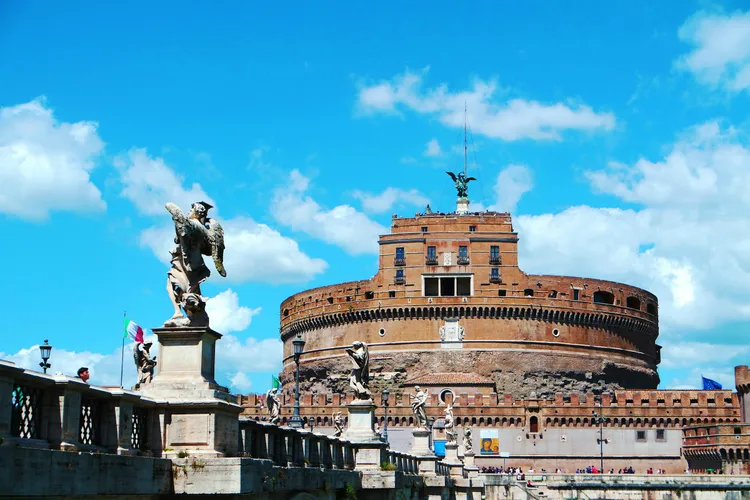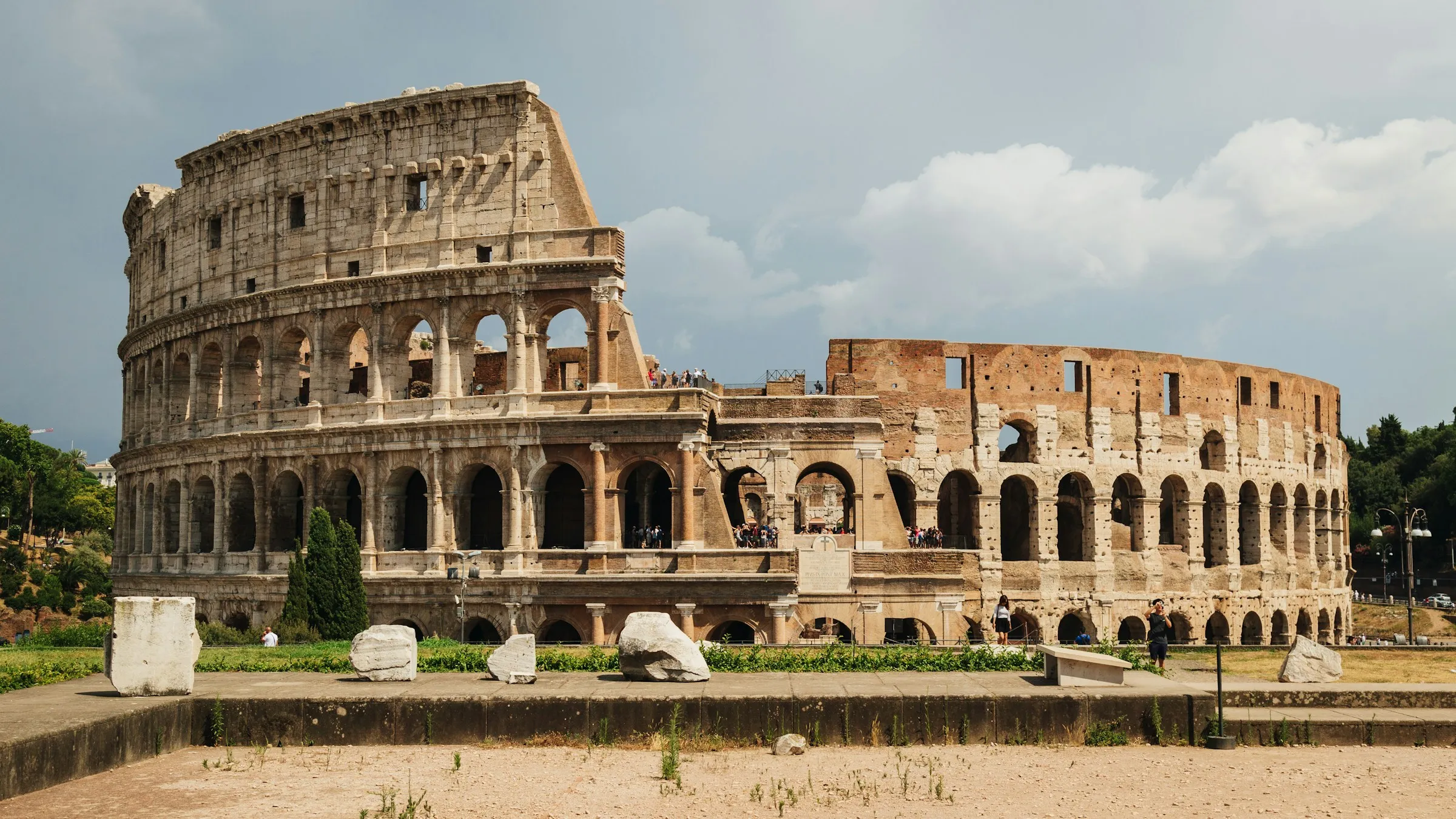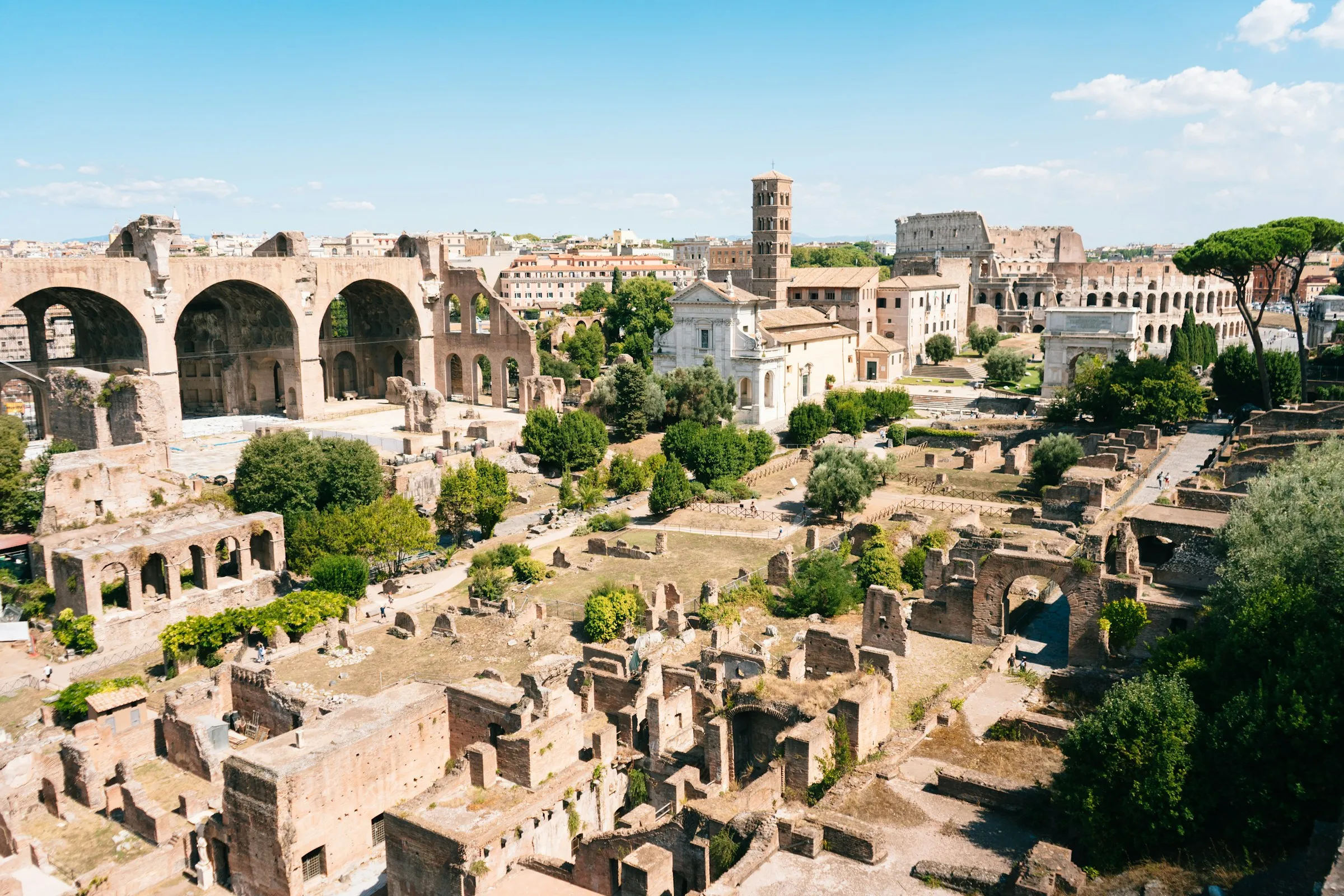Located just a stone’s throw from Vatican City, Castel Sant’Angelo is one of Rome’s most distinctive historical monuments. Its cylindrical structure along the Tiber River creates an unmistakable silhouette against Rome’s skyline. Originally built as a mausoleum for a Roman emperor, it later transformed into a fortress, papal residence, and prison throughout its long history. Today, it serves as a museum open to the public. This article will guide you through the must-see attractions and essential visiting information for this iconic Roman landmark.
Castel Sant’Angelo: Essential Information
History and Origins of Castel Sant’Angelo
Castel Sant’Angelo was originally constructed as the “Mausoleum of Hadrian” (Mausoleo di Adriano) by Emperor Hadrian (who ruled from 117 to 138 AD) to serve as his final resting place. It was completed in 139 AD, after Hadrian’s death, and his remains were placed inside despite the building not being fully completed. It subsequently became the burial site for several imperial families.
By 401 AD, the structure began its transformation into a fortress, and by 403 AD, it was incorporated into the Aurelian Walls. During this conversion, most of the original tomb decorations and imperial remains were lost.
The Origin of the Name “Sant’Angelo”
“Sant’Angelo” means “Holy Angel” in Italian. The name originates from an event in 590 AD, during a plague outbreak in Rome.
According to legend, Pope Gregory I had a vision of the Archangel Michael sheathing his sword atop the castle, which was interpreted as a sign that the plague would end. This event led to the structure being renamed “Castel Sant’Angelo,” and in the 16th century, a statue depicting the angel sheathing his sword was placed at the top of the building.
How Was Castel Sant’Angelo Used Throughout History?
Castel Sant’Angelo has served multiple purposes throughout its long history:
- Ancient times: Mausoleum for Emperor Hadrian and his family
- Middle Ages: A crucial defensive fortress for Rome
- From the 14th century onward: Papal residence and refuge
- For a period: Used as a prison
- Since 1901: Open to the public as a museum
One particularly interesting feature is the “Passetto di Borgo,” a secret elevated passageway connecting the Vatican to Castel Sant’Angelo. This escape route allowed popes to flee to safety during dangerous situations. During the infamous “Sack of Rome” in 1527, Pope Clement VII used this passage to escape to the castle.
Structure and Architectural Features
Castel Sant’Angelo features a distinctive cylindrical design that allows beautiful natural lighting throughout the structure. Its cake-like cylindrical shape differs from traditional castle designs because of its original purpose as a mausoleum.
Today, the castle houses a museum with different exhibitions on each floor, showcasing various historical periods and cultural elements.
Highlights of Castel Sant’Angelo
The Spiral Ramp
Inside Castel Sant’Angelo, you’ll find a remarkable spiral ramp that originally served as the passage to the burial chamber when the structure was Hadrian’s mausoleum. This architectural feature exemplifies the impressive engineering skills of ancient Roman builders.
The Angel Statue at the Summit
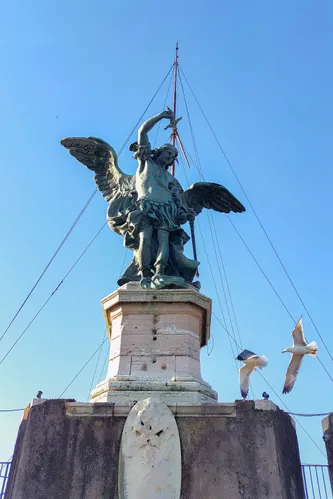
The statue of Archangel Michael at the top of the castle welcomes visitors as the iconic symbol of Castel Sant’Angelo. The current bronze statue dates back to the 18th century and depicts the angel with outstretched wings, sheathing his sword. This statue represents the legend that gave the castle its name and is viewed as a guardian watching over Rome.
The Papal Apartments
Inside the castle, you’ll find papal apartments that were renovated from medieval times through the Renaissance period. These rooms feature luxurious decorations and beautiful frescoes. The “Room of Clement VII” is particularly notable for its stunning frescoes in the pope’s private chamber. There is also a papal chapel within the castle.
These rooms showcase the opulence of the era when the castle served as a papal refuge and residence. Renaissance furniture, porcelain, and paintings are also on display throughout these areas.
Ponte Sant’Angelo and the Angel Statues
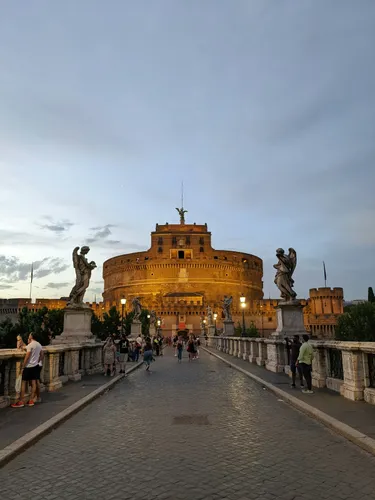
Ponte Sant’Angelo spans the Tiber River in front of the castle. The bridge was originally built in the 2nd century and was called “Pons Aelius,” but later adopted its current name.
In the 17th century, at the request of Pope Clement IX, Bernini and his students created ten angel statues that line both sides of the bridge. These sculptures represent themes from Christ’s passion, and their incredibly soft and delicate expressions seem to defy the stone medium from which they were carved.
Visiting Castel Sant’Angelo: Practical Information
Opening Hours
- 9:00 AM to 7:30 PM
- Last admission: 6:00 PM
The castle is closed on Mondays, May 1, and December 25.
Ticket Options and Purchase Methods
Tickets for Castel Sant’Angelo can be purchased through the official website. To avoid long lines, it’s recommended to buy tickets online in advance.
- Entry Ticket (Skip-the-Line): €20
- Entry Ticket + Audio Guide: €32
- Entry Ticket + Guided Tour: €40
Online purchases require selecting a specific time slot for your visit.
Entrance and Admission Process
The main entrance is located at the front (south side) of the castle. It’s recommended to arrive 15 minutes before your scheduled time.
Time Needed for Your Visit
On average, a visit to Castel Sant’Angelo takes about 2.5 hours. If you want to explore thoroughly and enjoy the views from the terrace, it’s best to allow approximately 3 hours for your visit.
How to Get There
- By Metro: Take Line A to “Lepanto” station, then walk approximately 15 minutes.
- By Tram: Not recommended as there are no close stations.
- By Bus: Get off at “P.Za Pia/Castel S.Angelo” or “Ponte Vittorio Emanuele” stops, then walk about 5 minutes.
Tips for Visiting Castel Sant’Angelo
- There are paid toilets just outside the castle, but free toilets inside.
- The castle can get extremely crowded during tourist season and on weekends. Visit early in the morning or on weekdays for a more pleasant experience.
- There are many stairs and ramps inside the castle, so wear comfortable walking shoes.
- The terrace at the top offers spectacular views of Rome and the Vatican. Don’t forget your camera!
- Be vigilant about pickpockets and petty theft in this area. Keep your valuables secure.
Nearby Attractions
- Vatican City: Just a short walk from Castel Sant’Angelo, the world’s smallest independent state features St. Peter’s Basilica and the Vatican Museums, with countless attractions to explore.
- Church of Sant’Andrea delle Fratte: Located about 200 meters from the Spanish Steps, this church houses the original Bernini angel statues that were designed for Ponte Sant’Angelo. Admission is free.
- Tiber River Promenade: The walking paths along the Tiber River near Castel Sant’Angelo offer beautiful views and are known as filming locations for the classic movie “Roman Holiday.”
